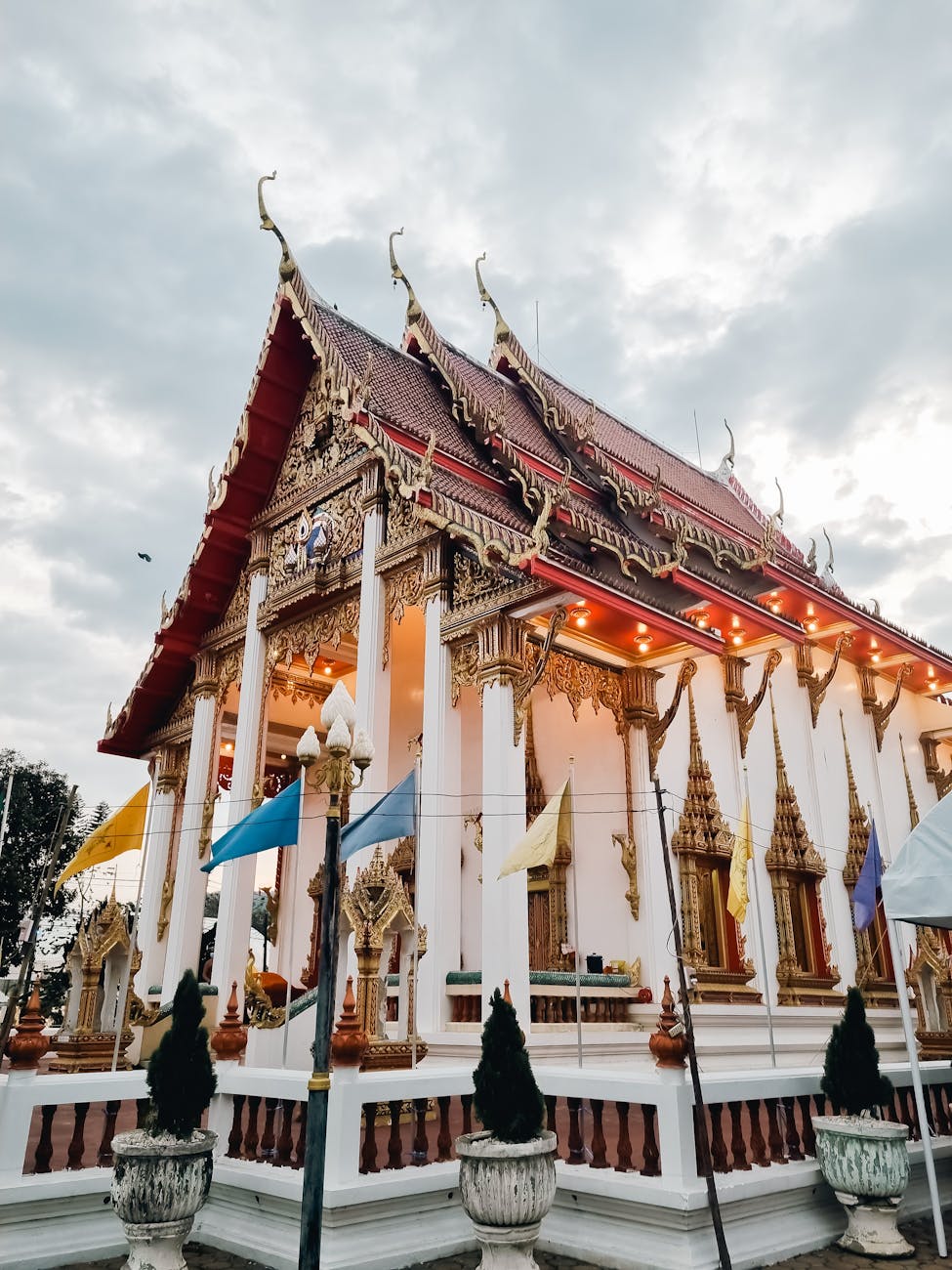Immerse yourself in the vibrant culture and rich heritage of Thailand, particularly in the breathtaking island of Phuket. Often celebrated for its stunning beaches and vibrant nightlife, Phuket also cradles historical gems that reveal fascinating narratives of the region’s past. Visiting these historical sites offers an unforgettable opportunity to experience the true essence of Thailand and to uncover unexpected stories that have shaped the island into what it is today.
This blog post will take you on an enlightening journey through Phuket’s lesser-known historical sites, uncovering the captivating blend of history, culture, and stunning architecture that adorns this tropical paradise. From ancient temples to colonial buildings, every corner brims with a tale waiting to be told. Whether you are a seasoned traveler or a first-time visitor, Phuket’s hidden treasures offer a unique spectrum of explorations that you wouldn’t want to miss.
Table of Contents
- Introduction
- Historical Sites of Phuket
- Temples that Tell a Story
- Colonial Architecture in Phuket
- Experience Local Culture
- Practical Tips for Travelers
- Inspired Journey Awaits
Historical Sites of Phuket
Phuket’s historical sites are not just experiences; they are portals into a time where tradition and modernity beautifully coexist. The island has a plethora of historical landmarks that reflect its storied past. One remarkable site is the Thalang National Museum, an educational gem that offers insightful exhibits on the history of Phuket and its surrounding areas. Here, visitors can delve deep into the local myths and legends that have lingered through generations. This museum also serves as a gateway to understanding how Phuket evolved from a tin mining hub to a contemporary tourist hotspot.
Another must-visit location is the Old Phuket Town, characterized by its vibrant Sino-Portuguese architecture that tells its own story. Here, brightly colored shops and cafes line the streets, showcasing the charm and allure of the past in a modern setting. This area not only hosts cultural events but also provides numerous opportunities to taste local delicacies, giving you a rounded experience of Phuket’s rich cultural tapestry.
Temples that Tell a Story
Phuket’s temples stand as testaments to the island’s spiritual heritage, each echoing unique narratives intertwined with the land’s history. One prominent site, Wat Chalong, invites visitors to discover the intricacies of Buddhist architecture while also paying homage to revered monks who played significant roles in Phuket’s history. This temple is not merely a place of worship but a sanctuary of peace that showcases stunning murals and intricate statues, effectively communicating the region’s religious ambiance.
Visiting Wat Phra Thong, another essential temple, presents an engaging experience worth your time. The temple, where a half-buried golden Buddha statue can be found, is steeped in local legend. The story persists that any attempts to excavate the statue would lead to misfortune, adding a layer of intrigue and mystique. Exploring these temples, full of serene surroundings and thoughtful design, promises a spiritual journey that brings a new cultural awareness.
Colonial Architecture in Phuket
The rich colonial history of Phuket manifests itself through beautiful architecture found scattered throughout key areas. Notably, the Sino-Portuguese style houses create an ambiance filled with history, seamlessly integrated into the daily lives of the island’s residents. A walking tour of these charming buildings reveals stories from the past that are etched into their walls—a fascinating glimpse into the lives of earlier inhabitants.
The Sino-European influence is prominently seen in the buildings along Dibuk Road and Krabi Road, which house small boutiques, art galleries, and cafes that preserve their original architectural aesthetics. These locations have evolved into trendy hotspots while simultaneously safeguarding historical significance that adds depth to the island’s identity. Walk among these structures, and you will start to appreciate their stories, which narrate tales of trade, culture, and coexistence.
Experience Local Culture
When exploring historical sites in Phuket, immersing yourself in local culture is just as essential as visiting the landmarks. One way to experience this is by joining cultural festivals such as the Vegetarian Festival, which vividly represents local beliefs and traditions. Engaging with the locals at these events not only provides an eye-opening experience but also a chance to taste authentic Thai cuisine, participate in traditional dances, and even witness unique ritual ceremonies. This cultural immersion adds another dimension to your trip, setting it apart from an ordinary holiday.
Additionally, visiting local markets like the Sunday Walking Street Market allows you to connect more genuinely with Phuket and its people. Here, vendors proudly display artisanal crafts, fresh produce, and delectable street food, presenting a sensory overload that is undeniably thrilling. Conversations with locals can unfold fascinating stories about their heritage, making your journey not just a physical exploration but an enriching cultural exchange.
Practical Tips for Travelers
Planning your trip to explore historical sites in Phuket can be an exciting endeavor with the right approach. It is advisable to make a checklist of the sites you wish to explore to ensure you prioritize your time efficiently. Don’t forget to consider transportation options; whether renting a scooter, using local taxis, or opting for guided tours, each offers convenience.
Consider visiting during the shoulder seasons, as this will allow you to enjoy a more peaceful exploration of crowded sites. Hydration is also essential when exploring as tropical heat can be overwhelming, so carry water at all times. Lastly, engaging with locals about their favorite spots will often lead to discovering hidden gems that aren’t widely advertised, making for an authentic experience that reflects Phuket’s character.
Inspired Journey Awaits
As your journey through Phuket’s historical depths comes to a close, remember that these explorations have the power to stir your perception of travel. You are not just a visitor but a part of the rich tapestry that binds these ancient stories, cultural traditions, and architectural wonders together. Each historical site you visit serves as a reminder of Phuket’s colorful heritage, urging you to reflect on and appreciate the experiences that travel grants us.
By immersing yourself in this picturesque island’s historical essence, you will uncover treasures that extend beyond the stunning beaches. So, grab your sunscreen, prepare your curiosity, and embark on a journey filled with endless discoveries in Phuket’s hidden historical gems.
FAQs
What are the must-visit historical sites in Phuket?
The must-visit historical sites include Wat Chalong, Thalang National Museum, Old Phuket Town, and Wat Phra Thong. Each site offers unique perspectives of Phuket’s rich history and culture.
Is it safe to explore local markets in Phuket?
Absolutely! Exploring local markets is one of the best ways to experience the authentic culture of Phuket. Just remain mindful of your belongings and respect the local customs.
When is the best time to visit Phuket for historical exploration?
The ideal time to visit is during the shoulder seasons, from May to June or September to October, when tourist crowds are smaller, allowing for a more intimate experience at historical sites.
Are there guided tours available for historical sites?
Yes, there are several guided tours available, offering deep insights into the history and significance of the sites. This can enhance your understanding and appreciation of Phuket’s rich heritage.
How can I engage with the local community while visiting?
Engaging with the local community can be done by participating in cultural festivals, visiting local markets, or simply striking up conversations with residents. They often have unique stories and experiences to share that can enrich your travel experience.
Image Credit: Pexels





